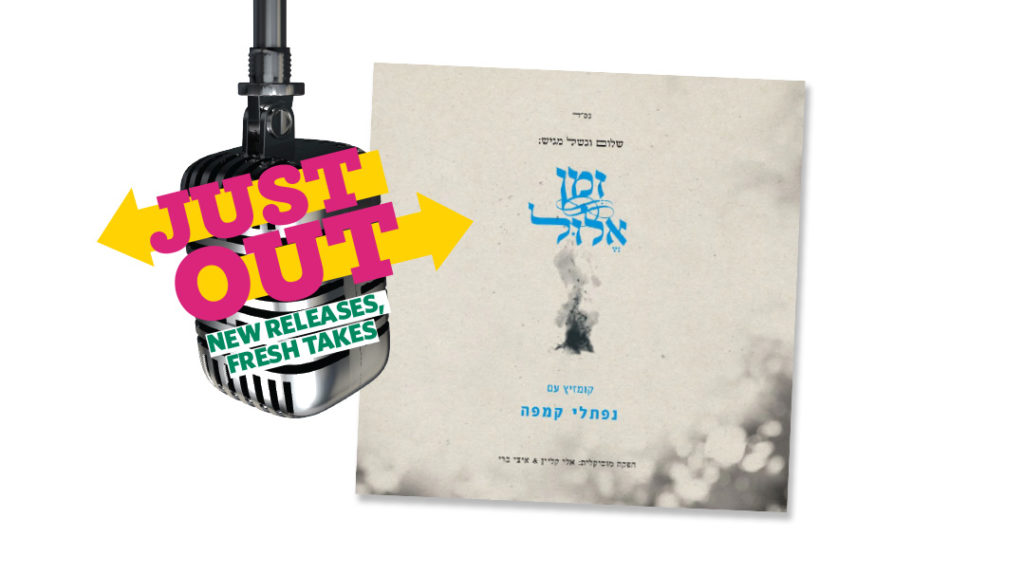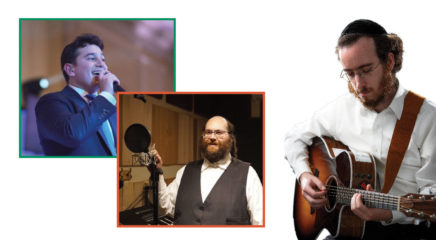“I took the classics like “Ochilah LaKeil” and “Chamol” and added a few special tunes that sweeten the tefillos for me”
Singer/songwriter and kumzitzer NAFTALI KEMPEH’S latest album, ZMAN ELUL, features a full playlist of tracks for this Month of Penitence and Mercy, including traditional Yamim Noraim classics and beloved yeshivish tunes. “The truth is that I thought about this project even before I began to work on my original albums,” says Kempeh. “I came to the world of recorded albums from the world of kumzitzes — MBD’s 2003 Kumzitz album was always a favorite and a prototype for me — so an Elul kumzitz is very familiar territory.”
He may have intended to release an album of classic Elul songs at the beginning of his career, but he took a detour creating three original albums instead: Leyachado Shemo, Ana Eilech and Hamalach. Now, he’s decided to change the pace with a return to his original idea.
“I took the classics like “Ochilah LaKeil” and “Chamol” and added a few special tunes that sweeten the tefillos for me,” says Kempeh. While his father has served as a baal tefillah for many years, first in the shul in Tifrach where he grew up and then in Kiryat Sefer, Naftali says that although his father’s nusach is part of him, another primary influence was the davening in the Tifrach Yeshivah, where he learned.
“I got used to the davening of the well-known baal tefillah, Rav Shaya Karlinsky. Anyone who’s ever davened in the Tifrach Yeshivah knows Rav Shaya’s nusach for “Vehavi’einu,” which I put onto this album. If I had to choose just one piece of davening that brings me into the Elul spirit and symbolizes Yamim Noraim for me, it would be that section.” In the local Jerusalem shul where he leads the davening, Kempeh uses his yeshivah’s nusach. And while he uses some popular tunes too, he says he’s reluctant to add or innovate too much.
The album, however, features some more contemporary and well-known Yamim Noraim tunes, such as Eitan Katz’s “Lemaancha,” which Kempeh wanted to deliver in his own style, moving it from the American yeshivah world into wider circles on the Israeli scene. Similarly, Kempeh wanted to bring back the vintage fast niggun to “Vehaviosim” that’s been sung for decades in the American yeshivah world and especially popular in the Israeli National Religious crowd (composed back in 1959 by a Chaim Berlin talmid in honor of the engagement of Rav Yitzchok Hutner’s daughter, Rebbetzin Bruria David).
Another gem is the Yossi Green song “Emes” (a.k.a. “Ki Lo Sachpotz Bemos Hameis”), from Avraham Fried’s 1988 We Are Ready album. “Avraham Fried sang it beautifully, but it emerges as more of a chazzanus creation. I sing it in more of a kumzitz style, for people to sing along to.”
As he’s done the last two years, Kempeh will be leading a Carlebach-style Selichos on Motzaei Shabbos Selichos in the Jerusalem Great Synagogue, following the traditional cantorial Selichos led by Chazzan Chaim Adler.
(Originally featured in Mishpacha, Issue 927)






